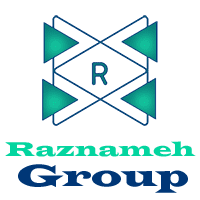Blockchain is a system of recording information in a way that makes it difficult or impossible to change, hack, or cheat the system.
A blockchain is essentially a digital ledger of transactions that is duplicated and distributed across the entire network of computer systems on the blockchain. Each block in the chain contains a number of transactions, and every time a new transaction occurs on the blockchain, a record of that transaction is added to every participant’s ledger. The decentralised database managed by multiple participants is known as Distributed Ledger Technology (DLT).
Blockchain is a type of Distributed Ledger Technology in which transactions are recorded with an immutable cryptographic signature called a hash.
This means if one block in one chain was changed, it would be immediately apparent it had been tampered with. If hackers wanted to corrupt a blockchain system, they would have to change every block in the chain, across all of the distributed versions of the chain.
There are many different types of blockchains like:
- Public blockchains: Public blockchains, such as Bitcoin, are large distributed networks that are run through a native token. They’re open for anyone to participate at any level and have open-source code that their community maintains.
- Permissioned blockchains: Permissioned blockchains, such as Ripple, control roles that individuals can play within the network. They’re still large and distributed systems that use a native token. Their core code may or may not be open source.
- Private blockchains: Private blockchains tend to be smaller and do not utilize a token. Their membership is closely controlled. These types of blockchains are favored by consortiums that have trusted members and trade confidential information.
All three types of blockchains use cryptography to allow each participant on any given network to manage the ledger in a secure way without the need for a central authority to enforce the rules. The removal of central authority from database structure is one of the most important and powerful aspects of blockchains.
When data is recorded in a blockchain, it’s extremely difficult to change or remove it. When someone wants to add a record to a blockchain, also called a transaction or an entry, users in the network who have validation control verify the proposed transaction
The Benefits Of Applying Blockchain Technology In Any Industry could be :
#1 Greater Transparency
Blockchain’s greatest characteristic stems from the fact that its transaction ledger for public addresses is open to viewing. In financial systems and businesses, this adds an unprecedented layer of accountability, holding each sector of the business responsible to act with integrity towards the company’s growth, its community and customers.
#2 Increased Efficiency
Due to its decentralized nature, Blockchain removes the need for middlemen in many processes for fields such as payments and real estate. In comparison to traditional financial services, blockchain facilitates faster transactions by allowing P2P cross-border transfers with a digital currency. Property management processes are made more efficient with a unified system of ownership records, and smart contracts that would automate tenant-landlord agreements.
#3 Better Security
Blockchain is far more secure than other record-keeping systems because each new transaction is encrypted and linked to the previous transaction. Blockchain, as the name suggests, is formed by a network of computers coming together to confirm a ‘block’, this block is then added to a ledger, which forms a ‘chain’. Blockchain is formed by a complicated string of mathematical numbers and is impossible to be altered once formed. This immutable and incorruptible nature of blockchain makes it safe from falsified information and hacks. Its decentralized nature also gives it a unique quality of being ‘trustless’ – meaning that parties do not need trust to transact safely.
#4 Improved Traceability
With the blockchain ledger, each time exchange of goods is recorded on a Blockchain, an audit trail is present to trace where the goods came from. This can not only help improve security and prevent fraud in exchange-related businesses, but it can also help verify the authenticity of the traded assets. In industries such as medicine, it can be used to track the supply chain from manufacturer to distributor, or in the art industry to provide irrefutable proof of ownership.
